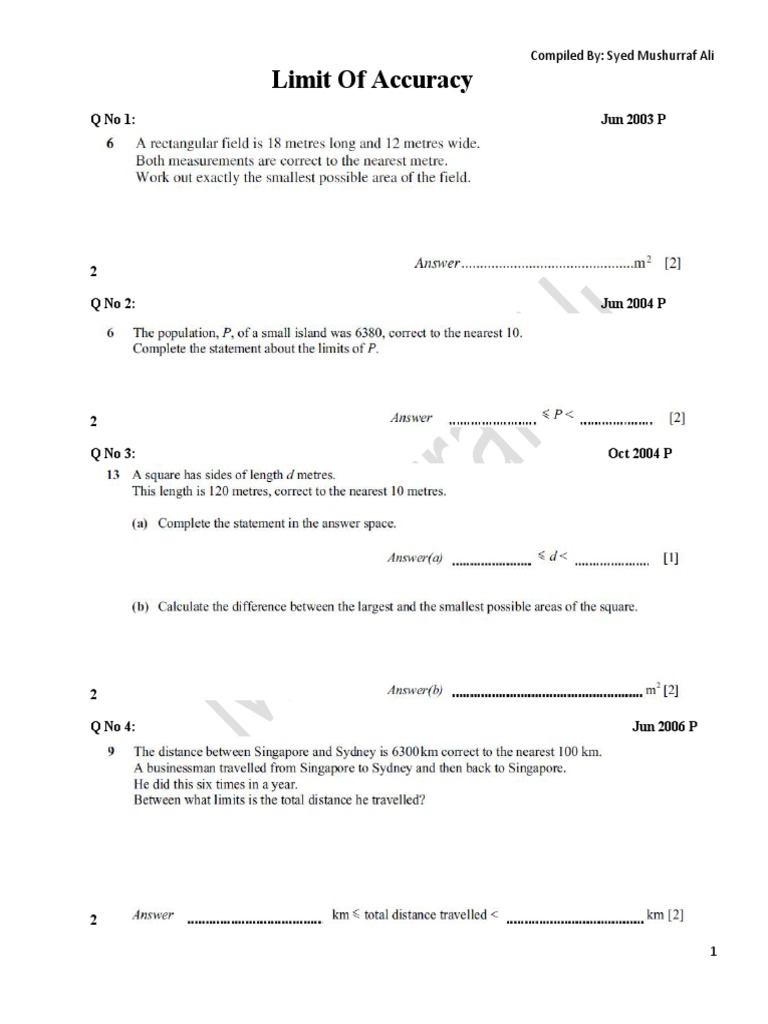In the realm of experimental sciences, the accuracy of measurements underpins the very foundation of empirical inquiry. The pursuit of precision is relentless, with researchers continuously striving to refine techniques and methodologies. However, amidst this relentless quest, a profound question emerges: is there a limit to how accurate measurements can be? This inquiry touches upon the limitations imposed by physical laws, the intricacies of measurement systems, and the philosophical implications of our understanding of reality.
Measurements are inherently susceptible to various types of errors, which can broadly be categorized into systematic and random errors. Systematic errors arise from identifiable factors that influence the measurements in a consistent manner, often attributable to defects in apparatuses or miscalibrated instruments. Conversely, random errors reflect fluctuations in measurements attributable to unpredictable variations in experimental conditions. These errors introduce a paradoxical complexity; as one strives for higher precision, the potential for errors manifests in more obscure forms.
One foundational principle that governs the accuracy of measurements is the Heisenberg Uncertainty Principle. This principle elucidates that certain pairs of physical properties, such as position and momentum, cannot be simultaneously measured with arbitrary precision. The very act of measurement, especially at the quantum level, injects an intrinsic uncertainty into the data retrieved. As one attempts to define a particle’s position more precisely, the momentum becomes increasingly uncertain, reflecting a fundamental limit to our comprehension of nature itself. This principle not only sets a boundary on measurement accuracy but also invites a deeper exploration of the philosophical implications surrounding determinism in physical systems.
Delving deeper, the limitations of measurement can also be contextualized through the lens of technological advancements. Throughout history, there has been an unwavering progression in the development of measurement instruments—from rudimentary tools to sophisticated devices such as atomic clocks, lasers, and quantum sensors. Each leap in technology has uncovered new realms of accuracy; however, these advancements often face the inevitable constraints imposed by quantum mechanics and the physical universe. For instance, the resolution of an optical measurement is fundamentally limited by the diffraction of light, which constrains the ability to discern fine details beyond a certain threshold determined by the wave nature of light.
The challenges posed by noise also contribute significantly to the limits of measurement accuracy. In any experimental setup, noise—be it electronic, thermal, or environmental—can obscure the signal being measured. Researchers engage in extensive efforts to mitigate noise through improved shielding, cooling techniques, and advanced signal processing. Nevertheless, the presence of noise complicates the quest for absolute precision, underscoring the inherent tensions between the desire for accuracy and the realities imposed by natural phenomena. As the digital era burgeons, the proliferation of data-driven methods and algorithms has augmented our ability to filter out noise; yet, the limitations of these techniques often highlight a seemingly inescapable challenge: as measurements are taken to deeper levels of precision, the noise floor also evolves, masking the true signal.
Additionally, the discussion of measurement accuracy necessitates exploration of the implications of scale. Measurement accuracy can vary significantly depending on the scale at which observations are made. For macro-phenomena, such as distance and weight, conventional instruments often suffice. However, as we descend into the micro and nano realms, the astronomical leaps in measurement techniques reveal a fascinating interplay between scale, precision, and accuracy. At extremely small scales, surface phenomena and quantum effects predominate, demanding a transition from classical measurement concepts to those founded on thermodynamic and quantum principles, introducing unforeseen complexities that redefine our approach to accuracy.
Moreover, the interplay between theoretical constructs and empirical observations raises compelling questions regarding the nature of measurement. Models and frameworks offer an essential means of interpreting results, yet they exist within a space of abstraction that is often removed from physical reality. The limitations of measurement become palpable when considering that idealizations—such as perfect instruments or noise-free conditions—are rarely achievable in practice. The tension between the model and the measurement elicits a pregnant space where the accuracy of observations must reconcile with the approximations of theoretical paradigms.
Philosophically, the quest for the limits of accuracy delves into an ontological inquiry about existence and knowledge. If measurements are tethered to inherent limitations, one may ponder the extent to which human understanding is apprehended through these approximations. Is the pursuit of absolute measurements an exercise in futility, or does it cultivate a deeper appreciation for the unknown? Each measurement bears witness to the intricacies of nature’s design while simultaneously revealing the constraints of our epistemological constructs. This interplay between the measurable and the immeasurable compels us to reevaluate our understanding of precision, accuracy, and knowledge.
In conclusion, while the pursuit of measurement accuracy is bound by physical, technological, and philosophical limitations, this quest remains a quintessential aspect of scientific inquiry. The limits to how accurate measurements can be forged through a matrix of constraints—ranging from fundamental principles of quantum mechanics to the practical challenges posed by noise and instrumentation. As researchers continue to probe deeper into the fabric of reality, embracing ambiguity and uncertainty within measurements invites a richer discourse, fostering an enduring fascination with the sciences and leaving open the tantalizing possibility of discovering the realms of the yet unknown.










